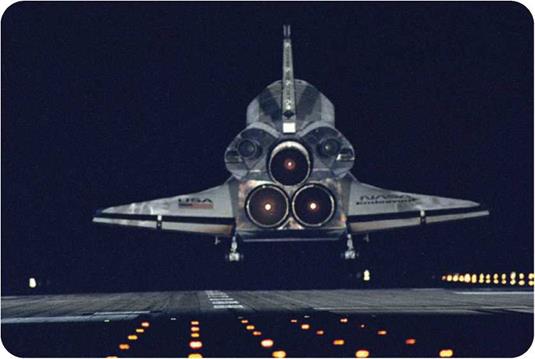Tails in Space
The Space Shuttle’s tail is a complicated structure that contains a total of thirty – three rocket engines and thrusters. There are three main engines that are used only during launch. Two smaller Orbital Maneuvering System (OMS) engines boost the spacecraft into orbit, change its orbit, and slow the spacecraft down to begin its return to Earth. In addition, there are twenty-four primary thrusters and four smaller thrusters, called vernier thrusters, for small changes in speed and attitude control.
The Space Shuttle’s tail fin, or vertical stabilizer, stands more than 26 feet (8 meters) high. Its rudder is unique.
О NOTAR helicopters, with no tail rotor, offer reduced noise and vibration. They are also safer to fly in tight situations where a tail rotor might meet an obstruction.
![]()
|
The first privately operated space plane, SpaceShipOne, has an unusual tail. When the space plane reaches the highest point in its flight-about 70 miles (110 kilometers)— its twin tail booms swivel up so that they stick straight up from the small wings. This jackknifed position enables it to reenter the atmosphere safely. The reentry is ballistic, which means SpaceShipOne falls back into the atmosphere under the action of gravity alone, like a rock falling to Earth. No engine power is used. The jackknifed shape causes a lot of drag, which slows the craft down. At an altitude of 50,000-60,000 feet (15,250-18,300 meters), the pilot swivels the tail booms down again, and the craft glides down to land on a runway.
ч___________________________________ /
![]()
![]()

 |
It works not only as a rudder but also as a speed brake. When it swivels to the left or right, it works as a rudder. To work as a speed brake, it splits in two and opens like a book. Half of it swivels to the left, and the other half swivels to the right.
SEE ALSO:
• Aileron and Rudder • Control System • Pitch, Roll, and Yaw
• Stability and Control










